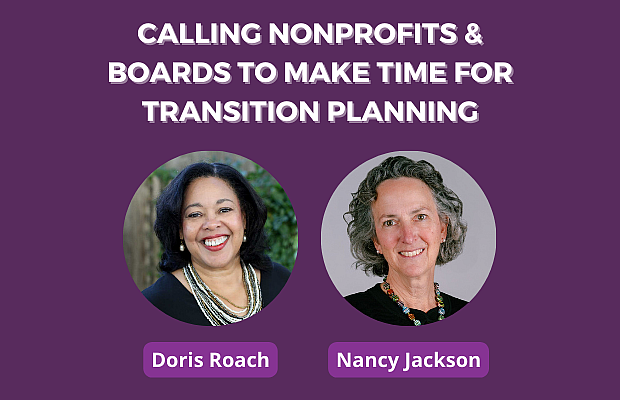
On February 15, SIF hosted a Leadership Transition Planning workshop. The workshop was open to Executive Directors nearing retirement or contemplating mid-career departure. We heard from the participants that the workshop provided an invaluable opportunity to learn about practices to navigate an effective executive leadership departure, allowed them to understand the role of the board, and to share with others the joys and anxieties of leaving or in guiding the Board process well. After the event, we invited Doris Roach and Nancy Jackson, both facilitators of the session to share some key takeaways.
What is Transition planning?
In the context of transition planning, it creates the time and space to carefully think through everything a departing leader needs to do to leave their organization well. This includes both completing major activities and projects, shoring up vulnerable areas, readying staff and the board, as well as the leader readying themselves personally for departure.
Why is this practice important?
To ensure that vital information, relationships, and institutional knowledge remain with the organization after a leader’s departure and that the senior staff and board can successfully and easily carry forth the mission and strategic vision without a hiccup. This includes making sure the work, systems, and capacity of the organization are solid around its mission, and that staff are cross-trained and the board is fully apprised of the needs of the organization, and are thoroughly engaged in determining its future.
What are the benefits of this practice?
A leader can successfully leave and a new leader can step in strongly because the organization itself can stand on its own without dependency on the prior leadership. It also builds the skill set of senior staff through increased responsibilities and broader engagement in organizational activity.
What are some of the best practices that you believe organizations should follow when thinking about transition planning?
Looking at the architecture of the organization, which includes, among other things, examining the mission to ensure it is solid and on purpose, having strong board leadership that can successfully lead the transition planning process, developing leadership capability of staff, and sharing organizational partnerships and relationships with the staff and board.
How can organizations incorporate diversity & inclusion when thinking about planning or executing a transition plan?
This is about setting up the organization to incorporate diverse leadership. It is important to have staff and board conversations about this, positioning staff to advance and be placed in visible leadership roles as well as exposure to the board. This is also about having a staff and board better reflect the community the organization serves through hiring and recruitment practices, as well as providing the board with the training and tools to be fully supportive of an incoming BIPOC leader.
--
To learn more about Leadership Transition planning, or to set up a training at your organization contact Nancy Jackson, EOS Transition Partners at njackson@eostransitions.com.
 Social Innovation Forum
Social Innovation Forum